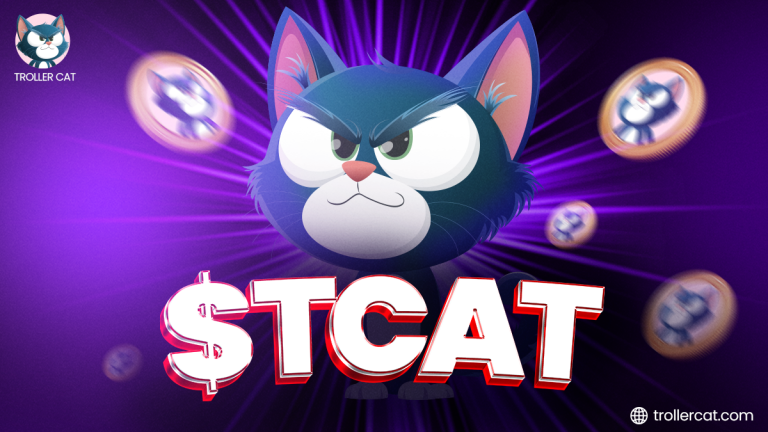Best Cryptos for Beginners 2025: Qubetics ROI Potential, Litecoin Stability, Injective Utility
Looking for the Best Cryptos for Beginners? Qubetics Eyes $15 Post Mainnet, Litecoin Holds Strong, and Injective Keeps Building
Getting into crypto doesn’t need to feel like rocket science. For folks dipping their toes into the space, the trick is finding digital assets that offer the right mix of simplicity, strong fundamentals, and future potential. Not every coin is meant for short-term hype or trading roulette—some are built with purpose, vision, and room for real-world value. The right picks can open doors to passive income, project participation, and even direct utility in everyday life.
Among the best cryptos for beginners, a few names consistently stand out—not just because they’ve stood the test of time or hit top rankings, but because they deliver features that matter to actual people. Qubetics (TICS) is climbing fast with a presale heating up, while classics like Litecoin and new-gen projects like Injective offer trustworthy performance and broad adoption. Let’s break down what each of these brings to the table—and why they’re great fits for those just getting started.
Qubetics (TICS): Power-Packed Presale with Real-World Use
For beginners looking at crypto with an eye on both usability and ROI, Qubetics is shaping up to be a no-brainer. Designed as a next-gen Layer 1 blockchain, Qubetics offers a utility-heavy infrastructure with cross-chain functionality and smart contract support. It’s fast, secure, and built to do more than just sit in a wallet. The real kicker? It focuses hard on cross-border transactions, making it a standout choice among the best cryptos for beginners who care about real-world impact.
Here’s the deal: sending money internationally through banks is slow, expensive, and packed with red tape. Qubetics solves that. A small business in Mexico City could use Qubetics’ blockchain to send payments to a supplier in São Paulo within seconds—with minimal fees and zero intermediaries. A freelance developer in Lima might use $TICS to get paid by a startup in Miami, completely sidestepping the hassle of conversion fees or government restrictions. Whether it’s business owners, gig workers, or families supporting loved ones abroad, Qubetics makes financial mobility way easier—and a lot more affordable.
Its infrastructure doesn’t stop there. With decentralized VPN access, a non-custodial wallet that supports multiple blockchains, and built-in smart contract tools, Qubetics delivers a full suite of blockchain tools designed for both everyday users and professionals. This isn’t some vague whitepaper dream—it’s a platform that’s been steadily building momentum with tangible tools and growing demand.
Qubetics Presale: Numbers, ROI, and Why It’s Still Early
Right now, Qubetics is in Stage 29 of its explosive crypto presale. Over 507 million tokens have been sold to a rapidly growing base of 24,600+ holders, bringing in more than $16 million so far. $TICS is priced at $0.1573 in this current stage. Those who got in at Stage 1 snagged it at just $0.01, meaning early backers are already staring at 1473% returns.
But the door’s not shut. Anyone getting in at $0.1573 still has serious upside. Analysts are projecting wild potential: $1 could mean a 535% ROI, $5 lands at 3078%, and more bullish scenarios put $TICS at $10 or $15 post-mainnet—yielding 6256% to 9434% ROI. This kind of projection doesn’t come from thin air—it’s backed by adoption, product rollout, and the growing credibility of the project’s team.
For beginners who’ve been watching from the sidelines, this is still a prime time to jump in before it lists on exchanges. When a project’s real-world utility lines up with this kind of growth window, that’s a rare combo. In a sea of hype coins and speculative assets, Qubetics is giving off all the right signals.
Litecoin (LTC): The OG of Digital Payments
Litecoin might not be the flashiest token on the scene, but it’s earned its spot as one of the best cryptos for beginners for good reason. Launched way back in 2011, it was built to be the “lite” version of Bitcoin—faster, lighter, and easier to use for everyday transactions. And that’s exactly what it’s been doing for over a decade.
What makes Litecoin stand out is its simplicity. There’s no complicated DeFi structure, no NFT hype, no confusing tokenomics—just good old digital payments done right. Transactions are fast and cheap, making it ideal for folks looking to actually spend crypto rather than just hold it. Litecoin is widely accepted across major platforms and merchants globally, and it still ranks as one of the most transacted assets in the space.
Across Latin America, where remittances and fast money transfers are a big deal, Litecoin has been steadily growing in popularity. Whether it’s sending funds to family or paying for digital services, its low fees and quick processing times make it super practical for folks who don’t want to wait days or get burned by fiat exchange rates. That kind of reliability is hard to beat, especially for those starting out in crypto who just want something that works.
The Litecoin network also uses the highly secure Proof-of-Work consensus mechanism, similar to Bitcoin, but with upgrades that make it more agile. The dev community has kept it alive and evolving, with constant tweaks for better privacy and security. While some folks chase whatever’s trending, Litecoin holds its ground by simply doing its job well.
For beginners unsure where to start, LTC gives them a tested, trusted entry point. No gimmicks, just a solid digital currency that actually lives up to its promise.
Injective (INJ): DeFi Done Right, Built for Builders
Injective is gaining serious traction as one of the best cryptos for beginners who are curious about decentralized finance but don’t want to drown in complexity. It’s a Layer 1 blockchain built specifically for finance applications—think decentralized exchanges, derivatives trading, lending platforms, and more—all rolled into a network that’s optimized for speed, zero gas fees, and developer freedom.
While some DeFi projects are locked into a single platform or clunky architecture, Injective is plug-and-play for multiple ecosystems. It integrates with Ethereum, Cosmos, and even Solana—making it a beast when it comes to interoperability. That means users and builders can enjoy the benefits of cross-chain liquidity without having to jump through technical hoops.
But here’s where it gets juicy for beginners: the apps being built on Injective actually work. They’re intuitive, user-friendly, and designed to bring Wall Street-level finance tools into the hands of everyday people. Imagine someone in Bogotá using a decentralized exchange built on Injective to trade tokens directly, without relying on a central authority or bank. Or a freelance trader in Buenos Aires using an Injective-based derivatives market to hedge crypto positions on-chain, without paying crazy fees.
The Injective protocol also rewards participation in governance and network activity, making it more than just a token to hold—it’s a whole economy to engage with. The network continues to attract top-level developers and partners, meaning the roadmap is packed with new tools and integrations that will only increase its use cases.
For new participants who want to go beyond just buying and holding and actually get involved in the mechanics of crypto finance, Injective offers a cleaner, smoother experience. It’s built to grow, and it’s doing so in a way that makes onboarding easier, not harder.
Final Thoughts
Getting started in crypto shouldn’t be overwhelming. Whether someone’s in it to learn, transact, or build a better financial future, it starts with picking the right projects. Qubetics, Litecoin, and Injective each hit different notes—but they all sing to the same tune of usability, growth, and long-term potential.
Qubetics offers something rare in crypto right now: a high-utility, real-world focused project that’s still in the presale stage. With $TICS priced at $0.1573 and strong projections backed by real use cases, it’s still wide open for new buyers. The presale isn’t over yet, and the opportunity is massive.
Litecoin continues to be the seasoned workhorse—perfect for those who just want a clean, stable experience without the bells and whistles. Meanwhile, Injective brings cutting-edge DeFi tools to a global audience without making things overly complex.
All three belong on any serious watchlist. But for those looking to make their first move in crypto—and maybe score some big wins along the way—Qubetics might be the hottest seat in the house.
For More Information:
Qubetics: https://qubetics.com
Presale: https://buy.qubetics.com/
Telegram: https://t.me/qubetics
Twitter: https://x.com/qubetics
FAQs
1. Why is Qubetics considered one of the best cryptos for beginners?
Because it offers practical use cases like cross-border payments, has a live presale, and provides strong ROI potential backed by utility-driven infrastructure.
2. How does Litecoin stay relevant today?
Litecoin delivers fast, low-cost transactions and is widely accepted globally—making it ideal for digital payments and beginner-friendly use.
3. What’s unique about Injective for new crypto adopters?
Injective simplifies access to DeFi by offering zero gas fees, high-speed transactions, and apps that work across multiple blockchains.
4. Is it too late to join the Qubetics presale?
Not at all. Qubetics is currently in Stage 29, with a $0.1573 price point and analysts predicting massive upside after the presale.
5. Which crypto is best for learning and using blockchain tech hands-on?
Qubetics offers an all-in-one experience for payments, dApps, and DeFi, while Injective caters to more finance-savvy users. Litecoin is great for simple transactions.
| Disclaimer: The text above is an advertorial article that is not part of bitcoininfonews.com editorial content. |






